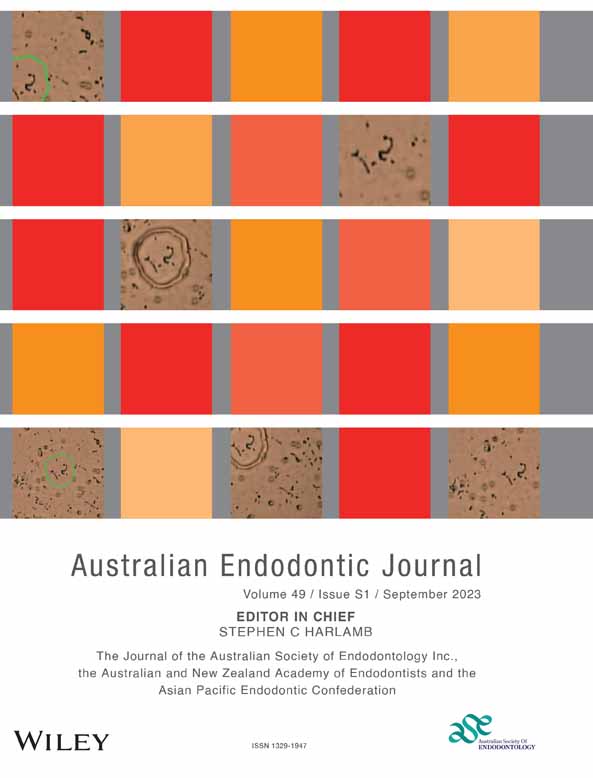A comparison of hydroxyl ion diffusion through root dentine from various calcium hydroxide preparations
Abstract
Different calcium hydroxide [Ca(OH)2] formulations are available. The aim was to assess differences in hydroxyl ion release with different formulations. Sixty-six teeth were divided one control (n = 6) and four experimental (n = 15) groups: (i) Pulpdent Paste; (ii): DT Temporary Dressing; (iii): Ca(OH)2 powder/saline; (iv): Ca(OH)2 points; (v): no medicament. pH was measured in inner dentine and outer dentine cavities over 12 weeks. Inner dentine pH rose rapidly for all groups except the points and controls. Peak pH was reached by day 2 before dropping and stabilising (8.0–9.2). Outer dentine pH rose steadily until day 21 for aqueous solutions and then stabilised (8.0–8.5). The points had minimal pH increase for the entire period. There were no significant differences in hydroxyl ion release between the aqueous solutions. Type of paste base did not affect release and diffusion of hydroxyl ions which continued for 84 days.
Conflicts of interest
The authors declare no conflict of interest.




